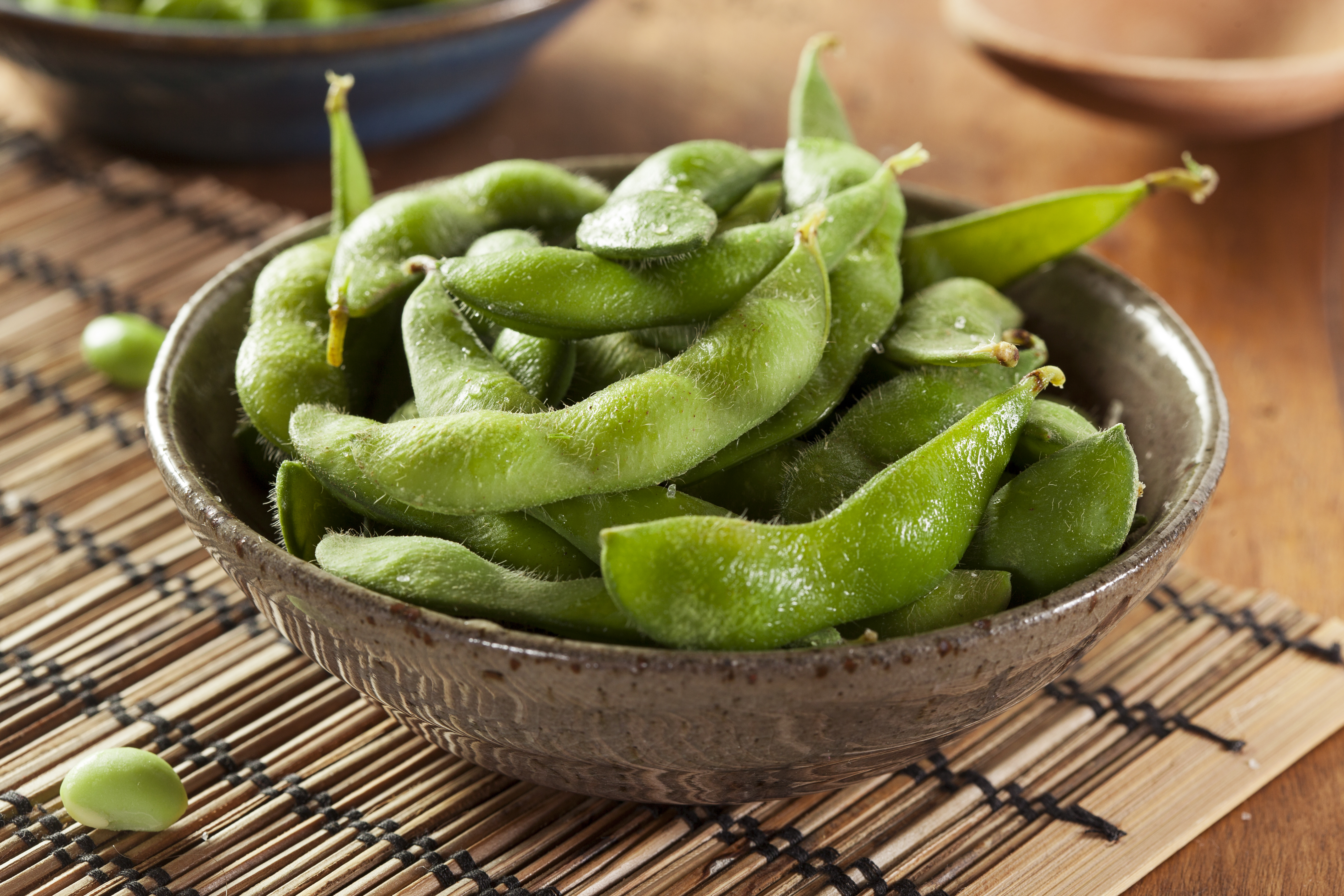Edamame
Edamame is a nutritious and delicious way to eat soy. Typical in Chinese and Japanese cuisine, we'll tell you all about this snack which nobody in the West can resist.
fresh food
Share

What is edamame?
Edamame is nothing other than soybeans when they are still tender. Soy pods are collected before they mature and boiled in saltwater. It is a snack which is eaten with a drink in many Eastern countries, especially in China and Japan, but also in Taiwan or Korea. The fact that it is healthy and tasty has made it one of the most appetising snacks. In addition, it is no longer necessary to go to restaurants or speciality stores to enjoy it, as more and more supermarkets sell it.
Although it can be consumed hot, it is more common to serve cold edamame. It is often accompanied with soy sauce and ginger. Some chefs cut the ends of the pods before boiling them. This cooking, which lasts between three and five minutes, can be done in water or steamed. Normally, salt is added, either dissolved in the water or after cooking the pods.
Properties of edamame
Edamame has a good supply of micronutrients such as calcium, iron, phosphorus, potassium, magnesium, vitamins, such as C, and thiamine. It also stands out for its good fibre content.
The fact that it is healthy and tasty has made it one of the most appetising snacks.

Among its properties, soybeans are beneficial to help the digestive system, thanks to the fibre they contain. Their contribution in Vitamin C contributes to the protection of cells against oxidative damage and helps reduce tiredness and fatigue, and Thiamine contributes to the normal functioning of the heart.
Recipes with edamame
Although the most common method is to boil the pod and eat the beans as if they were pipes, edamame can be used in many other recipes. In addition to eating the whole seeds, they can be crushed and served as a spreadable sauce. Another very simple way to consume it is by removing them from the pod and adding them to a recipe for poke or to enrich salads. It goes very well with quinoa.
If we want to give it a tastier touch, we can sauté the pods with some seasoning, such as sesame oil and grated ginger, or simply serve them with a sauce or dressing. It combines perfectly with soy sauce, rice vinegar and wasabi or cheese, lemon zest and olive oil.
For a more complex preparation, soybeans can be added to a rice or an edamame cream can even be prepared.






